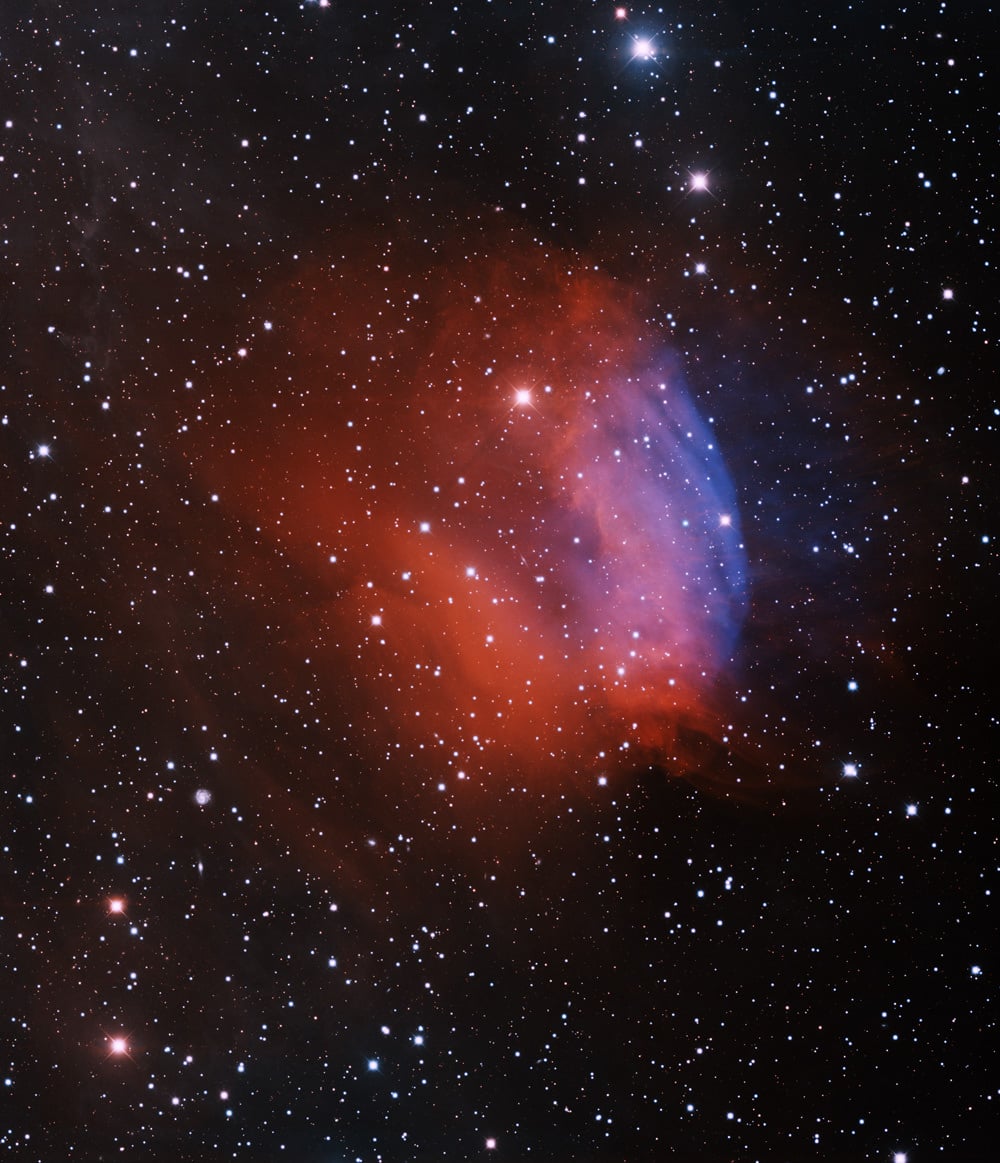We space-nerds like to express our amorous feelings, just like the rest of the population (although admittedly some of need more help/prodding in this area than others). And so just in time for Valentine's Day comes this new image of a planetary nebula, which looks like a rose -- or even a tulip – to share with your very spacey valentine.
The name of this planetary nebula, however, is not so romantic: Sh2-174. We need some suggestions for a better name!
And the way this object was created is not so romantic, either, as planetary nebulae come about in violent events. Sh2-174 was created when a low-mass star blew off its outer layers at the end of its life. The core of the star remains and is called a white dwarf. Usually the white dwarf can be found very near the center of the planetary nebula. But in the case of Sh2-174 it is off to the right. (It is the very blue star near the center of the blue gas). This asymmetry is due to the planetary nebula's interaction with the interstellar medium that surrounds it.
This image was obtained with the wide-field view of the National Optical Astronomy Observatory (NOAO) Mosaic 1 camera on the Mayall 4-meter telescope at Kitt Peak National Observatory. Travis Rector from the University of Alaska Anchorage made the observations for this image, taken through four different filters which are assigned colors that approximate what the human eye can see: B (blue), I (orange), Hydrogen-alpha (red) and Oxygen [OIII] (blue) filters. In this image, North is up, East is to the left.
Source:
NOAO
 Universe Today
Universe Today
